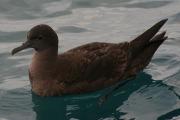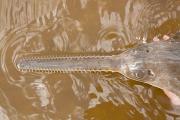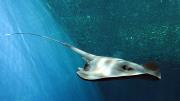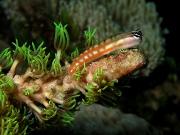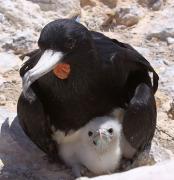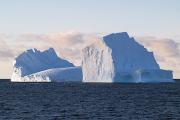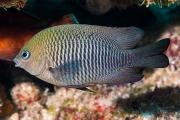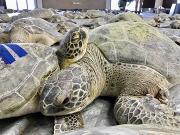Radio Program
Our regular Science and the SeaTM radio program presents marine science topics in an engaging two-minute story format. Our script writers gather ideas for the radio program from the University of Texas Marine Science Institute's researchers and from our very popular college class, Introduction to Oceanography, which we teach to hundreds of non-science majors at The University of Texas at Austin every year. Our radio programs are distributed at to commercial and public radio stations across the country.
It’s hard to imagine that land around the top of the northern Pacific Ocean would have been more hospitable during the last ice age than it is today. But there’s evidence of just that. The conditions might have allowed people to begin the migration from Asia to the Americas. And a recent study suggested a possible reason for the milder weather: stronger currents in the North Pacific.
If you’re a fan of Alfred Hitchcock movies, this plot might sound familiar: Thousands of angry seabirds attack a town on the California coast. They ram into cars, houses, telephone poles, and everything else. The sound is deafening. Scared residents lock their doors and call for help.
If you’re thinking of “The Birds,” you’re right -- and wrong. That is the outline of Hitchcock’s 1963 classic. But it also was a real event.
Southern Florida has been seeing more of a fish that had just about vanished from its coastline. Most of the rest of the world, though, has been seeing less of it. And without some urgent action, before too long they might not see it at all.
When researchers at Oregon State University were studying the rumbling of Earth’s crust about a hundred miles offshore, they noticed something interesting. Whenever fin whales were around, they got some especially strong signals. So they’ve suggested that the whales might make good research assistants -- they could help probe the ocean floor and below.
That’s not the only way in which marine creatures could help us learn about the bottom of the sea. Scientists in Japan reported that sting rays and electric rays might help map the ocean floor.
Fish display an amazing array of colors. Some are blacker than charcoal, others have rainbow-colored stripes, and still others have a mottled appearance to help them blend into the background. And the variety extends to fish eyes. They can feature colorful specks, dark stripes, and irises from red to green. Some even shine in the dark.
The recent saga of life on Ascension Island is a series of miscalculations. When the island was first settled, in 1815, it was a haven for millions of birds. But colonists also brought rats, which overran the island. So the settlers brought in cats to eat the rats -- which they did. But the rats and cats also ate the birds and their eggs. That decimated the birds, driving at least one species to extinction. But the cats were eliminated a decade ago, so the birds are coming back.
You might not think that the way an iceberg melts would matter much -- but it does. As an iceberg melts, the change in ocean temperature and salinity can alter currents and have other effects. So scientists need to know how and how quickly icebergs melt to make sure their ideas of how the oceans work are accurate.
Researchers in Australia recently contributed to that effort with experiments and mathematical models. Their work showed that icebergs don’t all melt the same way.
The longfin damselfish is a feisty little farmer. It’s only a few inches long, but it will attack just about anything that enters its territory -- including people. Yet some damselfish in the Caribbean actually protect a tiny shrimp on their farms. That’s because the shrimps’ waste helps fertilize the farm -- which may make the damselfish stronger.
The South Padre Island Convention Centre has hosted conferences, plays, concerts, and even basketball games. In February, though, it hosted an event like no other: a sea turtle rescue.
For the humpback whales of Glacier Bay, Alaska, the early months of the COVID-19 outbreak may have been a blessing. Travel bans and cancelled cruises left the bay much quieter, especially during the summer tourist season. That meant the whales didn’t have to “talk” as loudly or simplify their messages as much as they do during normal summers.
In fact, for several months the oceans got much quieter. As economies closed down, the number of cargo ships went down, too. Scientists monitored what was going on -- both at the shipping noise and at how marine creatures responded.


